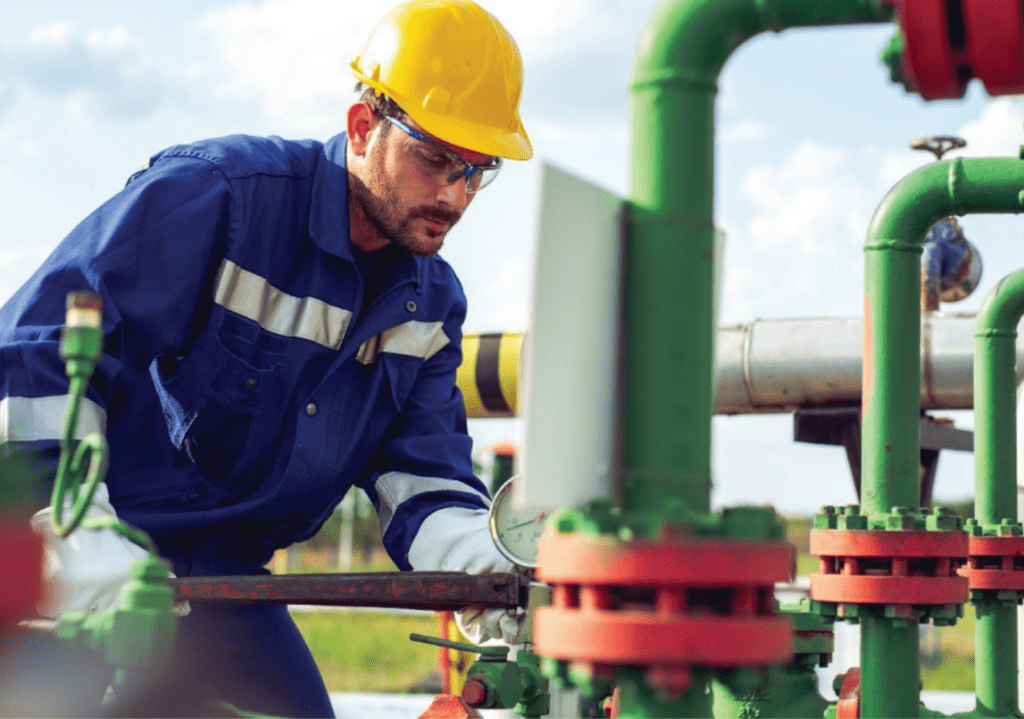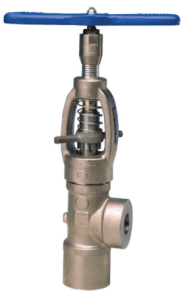Steam-Assisted Gravity Drainage (SAGD) has become a widely adopted recovery method of choice used in heavy oil and bitumen extraction to access heavy crude which is buried too deep or found in hard to access locations. This thermal recovery technique is used in regions with significant heavy oil and bitumen resources, such as Alberta’s oil sands in Canada.
By Marc Soucy, National Sales Manager – Armour Valve
The process involves the injection of high-pressure steam into reservoirs to reduce the viscosity of hydrocarbons and involves the injection of high-pressure steam into the reservoir through a horizontal wellbore, which heats and mobilizes the heavy oil or bitumen. The heated oil then drains by gravity to a parallel production well located below the injection well, where it is pumped to the surface for processing.
Within such a severe service environment, all components in the process need to be able to withstand this erosive environment, which can result in leakage and wear. Erosive environments can compromise valve performance, resulting in the need to frequently replace valves to maintain operational integrity.
A challenge was encountered in SAGD operations where choke valves utilized on high-pressure steam separator blowdown lines can leak due to the erosive nature of the application. This can result in substantial expenses for plant personnel who may need to replace them frequently. However, an alternative solution exists that can offer significant cost savings for plants.
Enhancing Reliability and Efficiency
One of the primary challenges with valves in SAGD operations stems from the erosive nature of the environment, where high-pressure steam, abrasive materials, and corrosive substances are prevalent. These erosive forces gradually wear down the internal components of valves, leading to leakage and compromised performance. Additionally, the frequent cycling of valves in SAGD processes, coupled with the high temperatures and pressures involved, exacerbates wear and tear, requiring regular maintenance and replacement. This not only results in significant downtime and production losses for a plant but also substantial costs for valve replacement and maintenance.

A customer grappled with a recurring issue involving a prominent brand of choke valves on a SAGD high-pressure steam separator blowdown line. These valves began to leak after just a few days to a week of operation. The leakage stemmed from erosive damage caused by the discharge of dissolved solids and organics present in the media. Consequently, the internal components of the valves suffered wear and tear, and the valves would require replacement every four months. Each time maintenance was required the plant faced the prospect of costly shutdowns, adding further strain to operations.
In-Line Repairability: Reducing Downtime and Maintenance Costs
Drawing from past experiences with the inline repairable nature of certain products, an operation shift supervisor identified a specific brand as a potential solution and made a recommendation to the plant’s reliability engineer. Following collaborative analysis by Armour Valve and a supplier, the throttling valve emerged as the proposed remedy for the issue at hand.
This choice was informed by the valve’s modular design, facilitating swift and effortless servicing. Maintenance could be seamlessly conducted in-line by disassembling the valve’s topworks and replacing the seat and stem assembly as necessary.
Conval Throttling Valve
These valves excel in severe service environments that require consistent flow control and reliable shut-off. They offer flexibility for adjusting flow characteristics or replacing components inline, addressing issues like excessive corrosion or erosion without the need to cut out and replace the valve. Carefully calibrated orifice sizing ensures fluid velocity remains below damaging thresholds across the seat, while the exit orifice angle minimizes both downstream piping erosion and noise levels.
The pressure seal bonnet, simple yet robust, allows hassle-free access for maintenance without the need for cutting welds or replacing seal rings and gaskets. Designed to endure numerous thermal cycles, the joint integrity between the body and bonnet remains steadfast over time. Additionally, the single-piece stainless steel gland further enhances the valve’s durability, ensuring prolonged performance in demanding applications.
To ensure optimal performance, maintenance personnel received comprehensive servicing instructions and hands-on training from factory-trained technicians, and the throttling valves were installed on a trial basis.

During the trial, the plant saw significant cost savings stemming from reduced downtime, labor, and maintenance expenditures.
In contrast to the previous choke valves, which required replacement every four months, the throttling valves underwent inspection and servicing once every two years as part of the plant’s routine preventative maintenance program. This translated to substantial savings for the plant in terms of reduced production downtime, service-related expenditures, and overall costs, estimated to be between USD $700-$800K annually.
Following the successful trial period, the plant proceeded to install 20 throttling valves across various boiler blowdown lines serving three steam generators. The throttling valve has since become the preferred choice for the blowdown evaporator system at this prominent SAGD facility.

Expressing confidence in the performance of their throttling valves, the plant Facilities Engineer affirmed their intent to continue utilizing these valves on future installations.
Embracing Sustainability Through In-Line Repairability
Looking ahead, the adoption of these inline repairable throttling valves in SAGD operations not only lends itself to cost savings and operational efficiencies but also underscores a commitment to sustainability. By reducing the frequency of valve replacements and minimizing downtime, these valves contribute to a more resource-efficient and environmentally friendly operation.
Moreover, their durable construction and long service intervals can align with a company’s broader sustainability goals by reducing the consumption of materials and minimizing waste. As the industry continues to prioritize sustainability and environmental stewardship, the success of these valves set a precedent for investing in technology that delivers both economic and environmental benefits.
By embracing in-line repairable valve solutions, plants can not only enhance their bottom line but also demonstrate leadership in promoting sustainable practices within the oil and gas sector. This dual focus on profitability and sustainability positions the plant for long-term success industry landscape.



